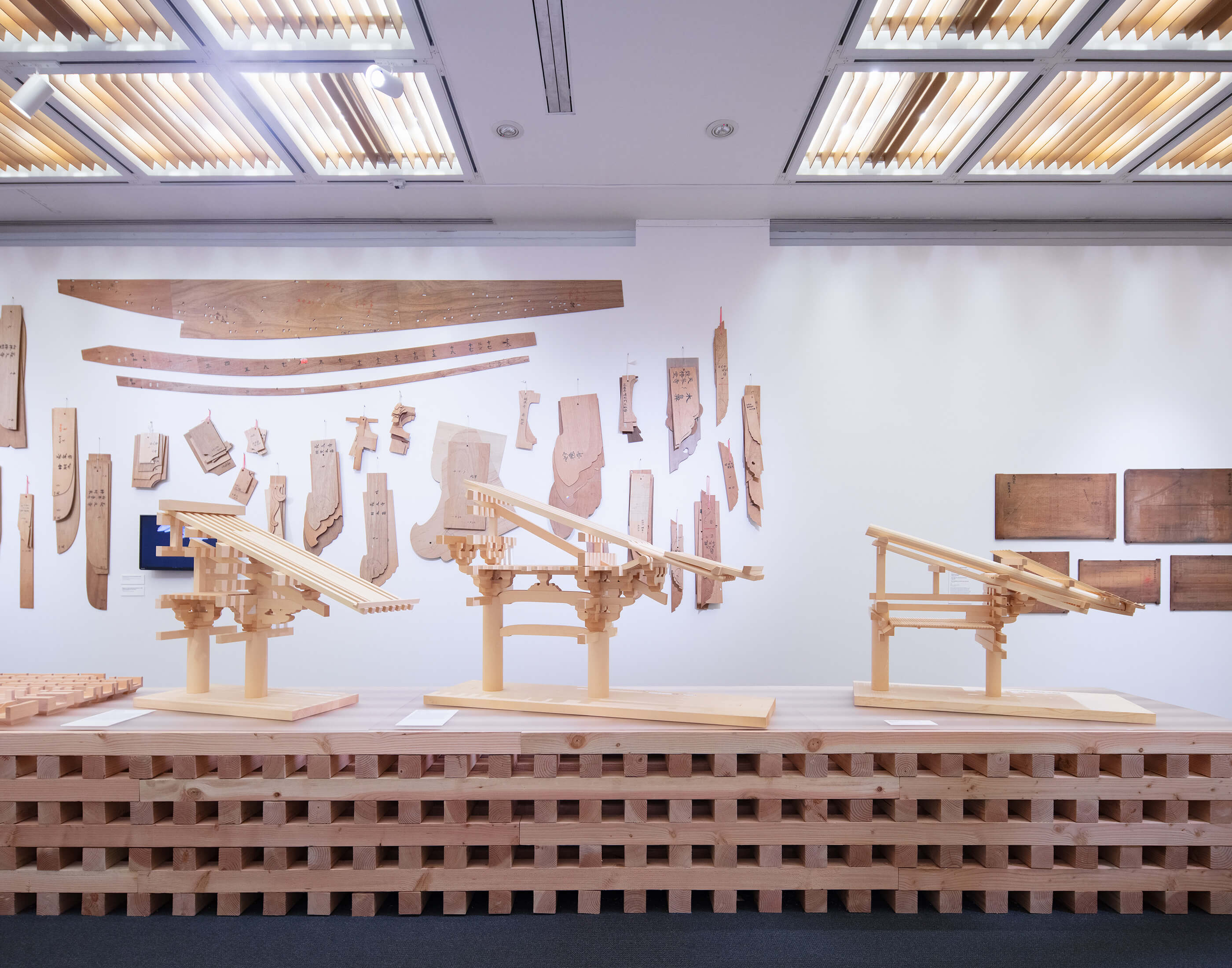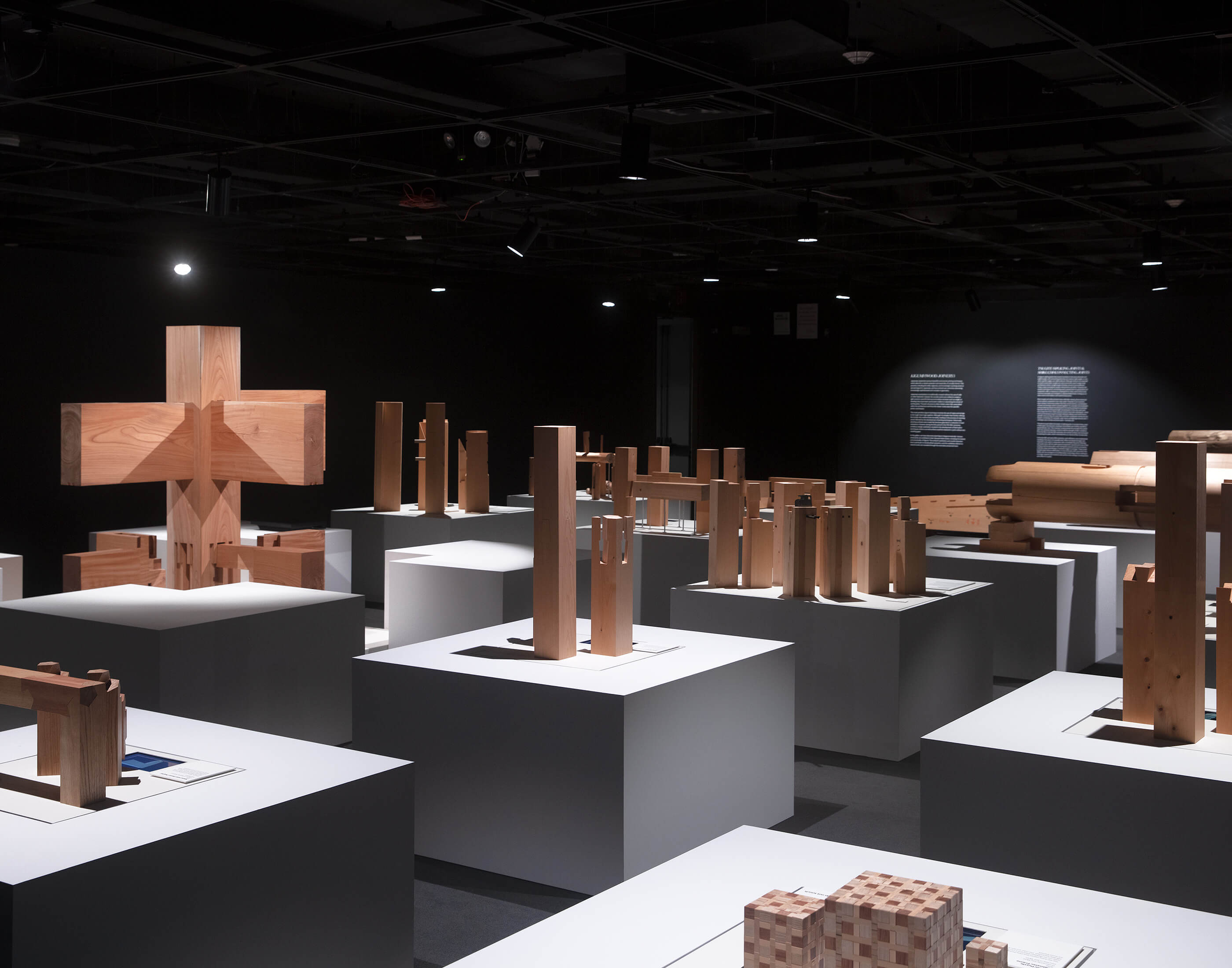Japan Society | New York City | March 11 through July 11
Lumber harvested from the north side of a mountain should be used for the north side of a structure, and wood from trees on different mountains should never be used together, counsels Tsunekazu Nishioka in a treatise on temple construction passed down orally over many generations. Nishioka was a renowned Tōryō, or master carpenter, who restored many of Japan’s most significant monuments in the 20th century, including the Hōryū-ji Temple, the world’s oldest surviving wood structure. Exquisite artifacts from Nishioka’s practice offer a view into the exacting process and principles of Japanese carpentry at the Japan Society’s exhibition When Practice Becomes Form: Carpentry Tools from Japan.

The show offers a satisfying and often awe-inspiring primer on Japan’s great timber architecture tradition, which was designated a UNESCO Intangible Cultural Heritage of Humanity in 2020. Most commonly known in the West for its ingenious and beautifully intricate system of hand-tooled joinery, this living tradition is carefully parsed by the Japan Society’s exhibition to reveal an almost devotional ethic of resourcefulness and natural balance. This approach to building offers important lessons for contemporary architecture, especially as the field grapples with the challenges of the climate crisis.
Designed by Sou Fujimoto in collaboration with Brooklyn-based Popular Architecture, the exhibition unfolds over three intimate galleries. This show marks the 50th anniversary of Junzo Yoshimura’s landmarked building for the Japan Society—the first structure designed by a Japanese citizen in New York City. Yoshimura’s elegant architecture, which merges high modernism with traditional Japanese principles, provides a charismatic background to the exhibition. In the first gallery, exemplary timber constructions are displayed via technical drawings and scaled models of temples and bridges. The models are shown both fully assembled and disassembled, like a kit of IKEA components—without the easy disposability. A beautifully arranged taxonomy of bracket components makes apparent the key to this architecture’s resilience. Each temple is an authorless system of interchangeable parts designed with a shared vocabulary of forms and techniques. Even after millennia, these structures can be continually renewed and even reconstructed for changing conditions. For example, the East Hall of the Yakushi-ji Temple, built in the eighth century, has been fully reassembled several times to capture different solar orientations over its life span, demonstrating the adaptability and responsiveness of this method of construction.
Not immediately evident is another secret to this architecture’s great longevity. Many of the models on display were expertly crafted by Mitsuo Ogawa, Nishioka’s former apprentice and today a renowned Tōryō and inheritor of temple construction techniques. Not receiving equal billing as his former teacher or the exhibition’s famous designer, Fujimoto, Ogawa’s silent presence in the exhibit reminds us of an insight from Richard Sennett’s seminal 2008 book The Craftsman: that craft traditions are communal technologies collectively managed over generations by often anonymous artisans and laborers. Care for the land, inherited knowledge, and the community itself are responsibilities shared by those building for the future—an instructive idea for how contemporary architectural practice might address the collective challenges facing the planet.

The exhibition’s second gallery displays beautifully crafted tools of forged steel and wood that, in the hands of a skilled craftsman, allow for control and precision beyond what modern machines can achieve. The show culminates in a reverent display of archetypal joints dramatically lit on pedestals, a staging that demonstrates Fujimoto’s deft hand as a designer in elevating these basic building blocks. These joints are part of an elaborate system of structural connections that provide both stability and expression in traditional Japanese architecture. While certainly crowd-pleasing, the striking display of virtuosity at times threatens to aestheticize and overshadow the core principles of economy and expressive pragmatism that are most remarkable in this way of building. When these construction components are overly abstracted into sculptural forms and fetishized for their complexity, they risk becoming what a contemporary practitioner of the craft once described to me as “vanity joinery.” In its best moments, the Japan Society show celebrates a clear and vital approach to building and a particularly relevant practice of cultivating material consciousness.
Henry Ng is a solo architect practicing and living in New York City.











